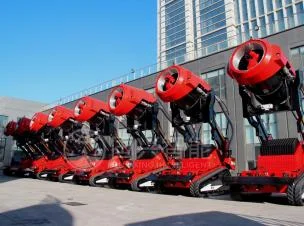In an increasingly interconnected world, the way we travel has evolved dramatically, especially for tourists embarking on long-distance journeys. With a plethora of transportation options available, understanding which mode is most commonly used can provide valuable insights into travel trends, preferences, and the overall tourism experience. This article delves into the various modes of transportation favored by tourists for long-distance travel, examining their advantages, disadvantages, and the factors influencing their choices.
The Landscape of Long-Distance Travel
Long-distance travel typically refers to journeys exceeding 300 miles (approximately 480 kilometers). Tourists often face a critical decision when selecting their mode of transportation, influenced by factors such as cost, time efficiency, comfort, and environmental impact. The primary modes of transportation include air travel, rail systems, road trips, and maritime options. Each mode has its unique characteristics that cater to different traveler needs.
Air Travel: The Dominant Force
Air travel remains the most commonly used mode of transportation for long-distance travel among tourists. According to the International Air Transport Association (IATA), global air passenger traffic has seen a significant resurgence post-pandemic, with millions of travelers opting for flights to reach their destinations quickly and efficiently.
Advantages of Air Travel:
- Speed: Flights can cover vast distances in a fraction of the time it would take by other means. For instance, a flight from New York to London takes approximately 7 hours, while the same journey by car and ferry would take several days.
- Global Reach: Airlines connect major cities and remote destinations alike, making air travel a versatile option for international tourists.
- Convenience: With numerous airlines and flight options, travelers can often find a schedule that fits their itinerary.
Disadvantages of Air Travel:
- Cost: Airfare can be expensive, particularly during peak travel seasons. Budget-conscious travelers may find better deals with alternative modes of transportation.
- Environmental Impact: Air travel is one of the highest contributors to carbon emissions, prompting eco-conscious travelers to seek greener alternatives.
Rail Travel: The Scenic Alternative
Rail travel has gained popularity, especially in regions like Europe and Asia, where extensive rail networks provide efficient and scenic routes for long-distance journeys. Countries such as Japan, France, and Germany have invested heavily in high-speed rail systems, making train travel a viable option for tourists.
Advantages of Rail Travel:
- Comfort: Trains often provide more space to move around, with amenities such as dining cars and sleeper compartments, enhancing the travel experience.
- Scenic Views: Train routes frequently pass through picturesque landscapes, offering travelers a unique perspective of the countryside.
- Reduced Carbon Footprint: Trains are generally more environmentally friendly than planes, making them an attractive option for eco-conscious travelers.
Disadvantages of Rail Travel:
- Speed Limitations: While high-speed trains are fast, they may still take longer than flights for certain long-distance routes.
- Limited Coverage: In some regions, rail networks may not connect all desired destinations, necessitating additional travel arrangements.
Road Trips: The Freedom of the Open Road
For many, the allure of a road trip is hard to resist. Driving allows travelers to explore at their own pace, making spontaneous stops along the way. This mode of transportation is particularly popular in countries like the United States, Canada, and Australia, where vast landscapes and scenic highways beckon.
Advantages of Road Trips:
- Flexibility: Travelers can create their own itineraries, choosing when and where to stop.
- Cost-Effective: For families or groups, driving can be more economical than purchasing multiple airline tickets.
- Cultural Immersion: Road trips often lead travelers through small towns and rural areas, providing a deeper understanding of local cultures.
Disadvantages of Road Trips:
- Time-Consuming: Long drives can be exhausting and may take significantly longer than flying.
- Potential for Traffic: Travelers may encounter delays due to traffic congestion, road construction, or adverse weather conditions.
Maritime Travel: The Cruise Experience
While not as common for long-distance travel as air or rail, maritime options, particularly cruises, have carved out a niche in the tourism sector. Cruises offer a unique blend of travel and leisure, allowing tourists to visit multiple destinations while enjoying onboard amenities.
Advantages of Maritime Travel:
- All-Inclusive Experience: Cruises often include meals, entertainment, and excursions, providing a comprehensive travel experience.
- Unique Destinations: Many cruises visit locations that are otherwise difficult to access, such as remote islands or coastal cities.
- Relaxation: The leisurely pace of a cruise allows travelers to unwind and enjoy their journey.
Disadvantages of Maritime Travel:
- Time Commitment: Cruises typically require a longer time commitment compared to other modes of transportation.
- Limited Port Time: Passengers may have limited time to explore each destination, which can be frustrating for those wanting to delve deeper into local cultures.
Conclusion: The Choice is Yours
Ultimately, the choice of transportation for long-distance travel among tourists hinges on individual preferences and circumstances. While air travel remains the most commonly used mode due to its speed and global reach, rail travel, road trips, and maritime options each offer unique advantages that cater to different traveler needs. As the tourism industry continues to evolve, understanding these dynamics will help travelers make informed decisions, ensuring their journeys are as enjoyable and fulfilling as possible. Whether you prefer the convenience of flying, the scenic beauty of train travel, the freedom of the open road, or the leisurely pace of a cruise, the world is yours to explore.



